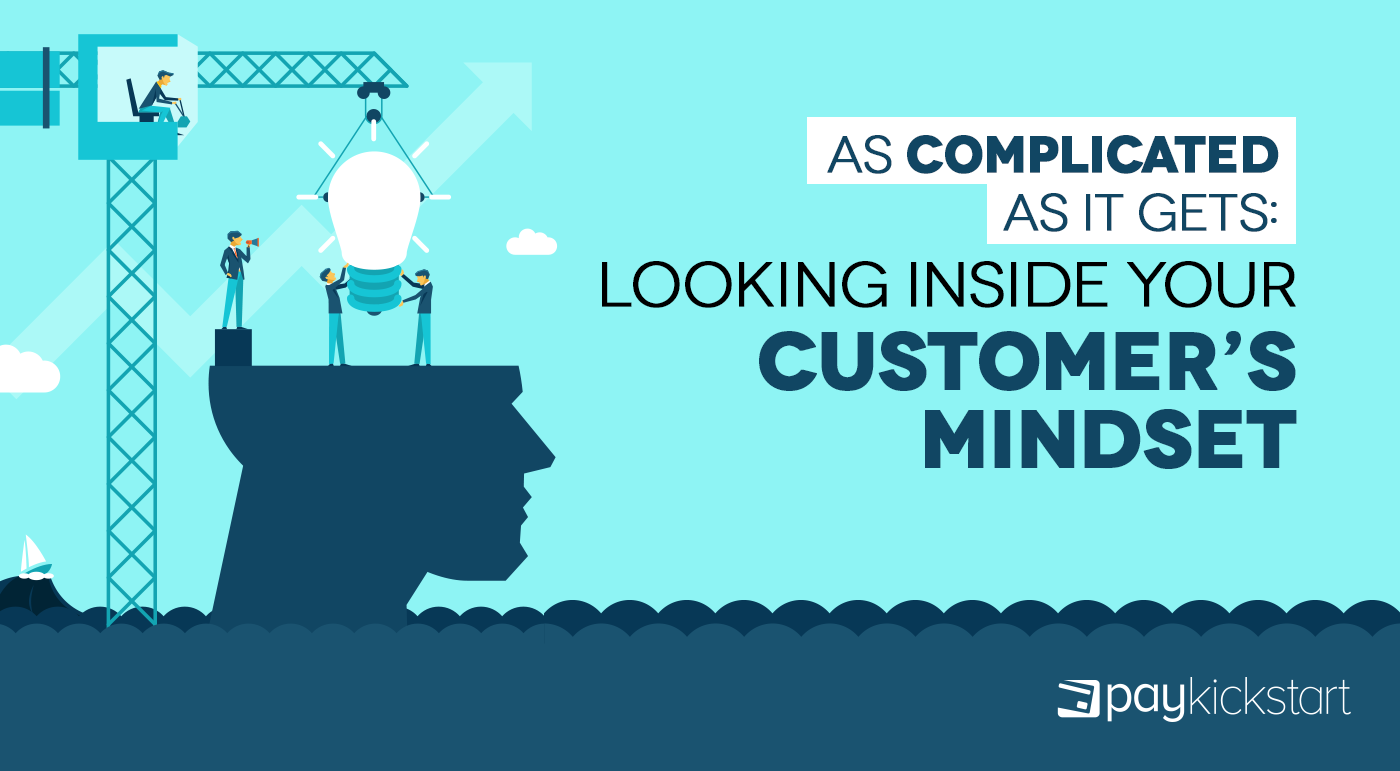Subscription growth hack (by PayKickstart)
Facebook Group - 3,932 members
Visit Group
“A satisfied customer is the best customer of all.”—Michael LeBoeuf (Business writer and strategist)
What are your customers thinking? This has become the (literal) billion dollar question for businesses big and small.
If you’re looking to optimize the customer experience your business offers and foster lasting customer loyalty, it’s time to start looking inside your customers’ mindsets.
Research from Invesp shows that more than 77% of marketing executives experienced a significant increase in access to useful data in 2020. However, only 49% of respondents were somewhat effective at using data-informed insights to structure their marketing strategies. This means that 51% are missing out on a vital opportunity to address their target audiences with products, services and communications that speak directly to their needs and demands.
Despite a fair number of marketing agencies using customer engagement data to their advantage, many marketers and organizational leaders are neglecting their customers both before and after sales are made. Unfortunately, one of the driving forces behind this trend is a lack of significant understanding of these customers.
Comprehensively understanding your customers and their mindsets is the key to reaching your core business objectives. Knowing your customers just as well as they do, if not better, is essential to building an enjoyable customer experience, crafting engaging digital content, and boosting sales.
There are many tools, mindsets, and data sets that you can use to gain insight into the mindset of your customers. These tools will give you the core understanding of your audience that you need to effectively meet their needs.

Optimal customer experiences have the power to drive both revenues and customer retention. It has never been easier to engage with customers in real-time in the modern age. Instant messaging tools, website analytics, and other channels that collect customer insights are readily available, often at no cost.
Your proprietary information from interacting with your customers can be used to gain a deeper understanding of them. Work with your customer service team to identify patterns in this data and react proactively using these insights.
Let’s say, for example, that your data is showing that your customers are missing your important purchase-related notifications. You can use tools such as in-app dunning notification widget to send your customers crucial notifications from within your app or website to complete necessary actions exactly where your customer was moments ago.
Customer development is another effective way to look into your customers’ minds.
Contact your customers regularly to discuss their pain points, challenges, and needs without bias. We recommend conducting amicable surveys and feedback-gathering Q&A sessions to ask them what they love about your products and what they would change. Doing so gives you an opportunity to refine your products and turn unsatisfied customers into happy ones.
PayKickstart allows you to craft non-intrusive automated surveys and view your customers’ summarized feedback on a convenient unified dashboard. By viewing this data in a centralized summary, you will be better equipped to identify key trends in customer demands and expectations and react proactively to optimize your engagement figures.
Add-on engagement features like our ringless voicemail and SMS modules will also enable you to create trigger-based voicemail and SMS campaigns through which you can connect with your audience directly on their smartphones. You can use these features to minimize campaign churn, notify customers of important events, and provide them with guidance as to the next steps they should take after purchasing your services.
Countless marketers use generic age, profession and location demographics to craft their buyer personas. Alas, these data points don’t provide nearly enough real world information to generate brand messages that truly engage your audience.
You can delve deeper into customer preferences by using Google Analytics’ Acquisitions tool to see which social media platforms, blogs and forums your site’s traffic stems from. Use this data to build personas and determine when and where you can reach these target audiences most effectively.
PayKickstart also offers a specialized demographics tool that allows you to gather extensive information on your target demographics. It also allows for the gathering of key metrics such as customer interests and skills, average purchase times, languages, devices, browsers, platforms, customer locations, and buyer profiles.
Keyword data is another goldmine when it comes to developing accurate buyer personas. You can use Google Webmaster Tools to generate a list of common keywords that drive visitors to your site, and then categorize them according to specific themes. Assign these themes to different buyer personas based on the data you have at your disposal.
Once you have this information available, incorporate these top keywords into your website’s landing pages, copy, content marketing campaigns, and digital interactions. Using the same keywords as your target audience is a subtle but effective way to make them feel at home on your platform.
Every single action your customers take on your website offers invaluable insights into their mindsets and behavior. These actions include everything from clicking on links to reading blog pages and hovering over CTA buttons.
You can use a user behavior tracking tool like Google Analytics to find out exactly how your customers and leads are interacting with your website. Quality tools will tell you more about time spent on pages, bounce rates, and other real-time data that will allow you to craft your marketing efforts accordingly.
The data you gather will inform you about what your audience likes and doesn’t like, what confuses and engages them, if they battle to navigate any parts of your site, and how you can build a strong website user experience for them.
According to the Qualtrics Forrester Study, companies that deliver an excellent customer experience outperform their competitors by nearly 80%.
There’s only one true way to comprehend the unique and ever-changing customer buying journey. That’s putting yourself in your customers’ shoes and seeing things from their perspectives in any way possible.
Today, smart SaaS businesses use an approach called customer journey mapping to create detailed and accurate representations of their customers’ journeys based on crucial touch points. These touch points are interactions between your brand and a customer before, after, and during a purchase.
There are both major and minor touch points to consider.
Your task will be to find out exactly what influenced each of your customers to buy and download your software, react to your brand’s post, and follow your page. Interact with your internal team to get a complete perspective on these actions and use creative collaboration to solve any challenges that arise.
If you identify any failed touchpoints, it’s important to address these directly.
EXAMPLE: Let’s say that a customer purchases your SaaS software but does not use it. Using milestones, develop a plan for contacting that customer to understand why they have decided to disengage.
If after a two-month milestone your customer still hasn’t logged into their new account, have your customer experience team contact them to gain clarification on this. Additionally, you can craft a smart email marketing drip campaign to re-engage customers based on specific usage milestones.
There is a vast amount of customer and user data available in the modern world. Today’s businesses certainly don’t need to guess what their customers really want or need from their products. They can instead use analytics and trends to make highly accurate estimations about their customers’ mindsets.
However, taking a customer-centric approach requires caution and empathy.
Data should be used compassionately and with context. It should be used to enhance customer intimacy and develop insights into exactly who is using your products and what they are looking for, and not to fuel underhanded sales tactics.
EXAMPLE: A product team may align a product update with customer support information to ensure that the changes made are relevant to the customers they will impact. Marketing teams may also use data to send out content based on where each customer is in the customer journey and to segment content according to the emails each customer has opened in the past.
With that said, siloed data can lead to less-than-empathetic use of data. Your focus should be on benefiting your customers using their data in full context. Connect insights across your software, systems and records of revenue to gather and interpret your data more effectively.
Turning a business into a customer-centric organization is a complex process that takes continuous experimentation and dedication. However, if we were to simplify the process, it should always have value creation at its helm.
Selling your product or service is only the end point of creating attractive value propositions to attract and engage potential customers. Customer-centric businesses are skilled at creating both products and solutions, and innovative value creation underpins both of these exercises.
Creation doesn’t apply simply to developing a constant supply of new products. It’s actually about finding innovative ways to extend the value of a product across a wider spectrum of needs. This can only be successfully achieved if a business has a deep and continuous understanding of its customers’ mindsets and behaviors. Businesses that are able to create great value are able to predict trends and keenly understand the disruptive forces that drive future change.
Ultimately, you should be using customer data to create real, tangible value for your buyers instead of only using it to target them. Big data can assist in the designing of new products and services, and the augmentation of existing ones.
A prime example is the updates applied to recommendation engines that generate value for customers by reducing their evaluation and search costs.
Another is the crowd-sourcing of data that can answer pressing customer questions like, “What do I have to learn from other customers?” or “How do my habits and behaviors compare to those of other customers?”

“Customer service shouldn’t be a department; it should be the entire company.”—Tony Hsieh (CEO of Zappos)
Looking into your customers’ mindsets using modern data and analytics tools will allow your business to become increasingly more customer-centric. As it does, it will become a more human brand that is driven by mutually beneficial customer relationships rather than profits and one-sided value generation alone.
If your company wants to improve its customer loyalty metrics, it’s recommended that you shift your focus to your customers. Their satisfaction might well translate into heightened earnings and better customer engagement rates in the long term.
Jill Goodwin is a content champion for a variety of online publications. She often covers topics that cater to business owners and entrepreneurs with a strong focus on finances, productivity, management, and a few other topics.
Read More About Jill Goodwin